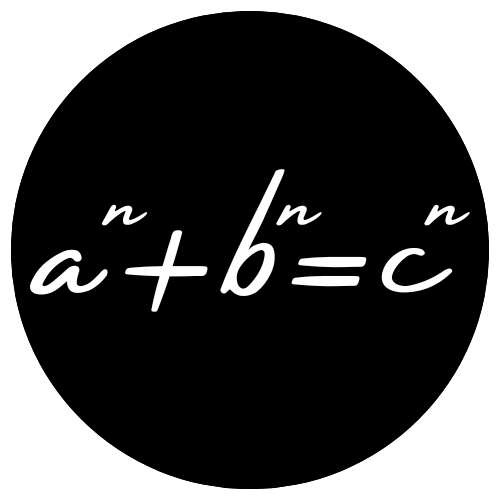A Journey into the Heart of Quantum Elegance
Paul Dirac, a name synonymous with brilliance and a touch of eccentricity, stands as a giant in the world of physics. His groundbreaking work seamlessly merged quantum mechanics and special relativity, birthing revolutionary insights that continue to shape our understanding of the universe. This blog post explores the life of Dirac and the profound implications of his celebrated Dirac equation.
Dirac: The Man Behind the Equation
Paul Adrien Maurice Dirac, born in 1902, possessed a mind that sought beauty and simplicity in the intricate tapestry of the cosmos. Awarded the Nobel Prize in Physics in 1933 (shared with Erwin Schrödinger) for "the discovery of new productive forms of atomic theory," Dirac was known for his quiet demeanor and intensely logical approach to problem-solving. Anecdotes abound, painting a portrait of a man who preferred concise statements and avoided unnecessary conversation. When asked what his basic beliefs were, he simply wrote, "I do not know." Such was the directness of Dirac, a mind unburdened by unnecessary complexity.
The Dirac Equation: A Masterpiece of Relativistic Quantum Mechanics
The Dirac equation, a relativistic wave equation, elegantly describes all spin-1/2 massive particles, such as electrons. Unlike the non-relativistic Schrödinger equation, the Dirac equation inherently incorporates the concept of spin and accounts for relativistic effects that become significant at high speeds. This equation not only provided a more accurate description of the electron but also unlocked a profound mystery: the existence of antimatter.
The equation itself is a thing of beauty:
(iℏγμ∂μ−mc)ψ=0
Where
- i is the imaginary unit
- ħ is the reduced Planck constant
- γμ are the Dirac gamma matrices
- ∂μ is the four-gradient
- m is the mass of the particle
- c is the speed of light
- ψ is the Dirac spinor, representing the quantum state of the particle
The Prediction of Antimatter: A Revolutionary Concept
One of the most stunning consequences of the Dirac equation was its prediction of antimatter. The equation yielded solutions with negative energy, which Dirac initially grappled with. He proposed the concept of a "Dirac sea," an infinite sea of negative-energy electrons. While this "sea" isn't the accepted physical model today, it paved the way for our modern understanding of quantum field theory, where the vacuum is not empty but a dynamic arena of particle-antiparticle creation and annihilation.
In 1932, Carl Anderson experimentally confirmed Dirac's prediction by discovering the positron, the antiparticle of the electron, with the same mass but opposite charge. This discovery revolutionized particle physics and solidified the Dirac equation as a cornerstone of our understanding of the universe.
Spinors: Beyond Vectors
The solutions to the Dirac equation aren't simple vectors; they are spinors. Spinors transform differently under rotations compared to vectors, revealing the inherently non-classical nature of quantum particles. This mathematical revelation opened doors to higher-dimensional analyses and deepened our comprehension of quantum reality.
The g-factor and Quantum Electrodynamics
The Dirac equation predicts a g-factor of 2 for the electron. However, quantum electrodynamics (QED), built upon the Dirac equation, predicts a more accurate value. The experimental value is approximately 2.0023193043617(15). This extraordinary agreement between theory and experiment is a testament to the precision and validity of the Dirac equation and QED.
Modern Applications: Dirac's Legacy Lives On
The Dirac equation isn't just a relic of the past; it remains a vital tool in modern physics. Its influence extends to:
- Positron Emission Tomography (PET Scans): These medical imaging techniques rely on positrons, the antimatter particles predicted by the Dirac equation.
- Graphene Research: The behavior of electrons in graphene is described by a modified form of the Dirac equation, leading to the discovery of novel electronic properties.
- Quantum Computing: The spin properties inherent in the Dirac equation are exploited for encoding and manipulating quantum information.
- Particle Accelerators: Facilities like the Large Hadron Collider (LHC) at CERN create and study antimatter particles, providing ongoing validation of the Dirac equation.
The Fine-Structure Constant: A Lingering Mystery
Dirac's work also contributed to our understanding of the fine-structure constant (approximately 1/137), a dimensionless constant that governs the strength of the electromagnetic interaction. This constant remains a topic of intense theoretical investigation, as its seemingly arbitrary value continues to puzzle physicists.
Dirac Sea: A Historical Perspective
The Dirac Sea, while not the currently accepted physical model, represents an important step in our understanding of quantum field theory. It's an excellent example of how scientific understanding evolves. The initial struggle to interpret the negative energy solutions led to a radical concept that ultimately contributed to our current view of the vacuum as a dynamic quantum field.
Conclusion: A Lasting Legacy
The Dirac equation stands as a testament to the power of mathematical beauty in unlocking the secrets of the universe. Paul Dirac's genius not only predicted the existence of antimatter but also laid the foundation for quantum field theory and continues to inspire physicists today. His work serves as a reminder that the pursuit of elegance and simplicity can lead to profound discoveries that reshape our understanding of reality. I recall a moment during my PhD studies when the brilliance of Dirac's achievement truly resonated. My professor, upon revisiting the equation, commented on the apparent simplicity of its derivation, suggesting, perhaps jokingly, that even he could have done it. But that very simplicity is the magic. To make something so profound appear so effortless is the mark of true genius. It's a testament to Dirac's mastery of Occam's razor – achieving the perfect balance of simplicity and utility, a feat few can replicate.
If you like our shirts about the Dirac Equation you can buy them here and here. Check out all our t-shirts at www.veryhiq.com.

